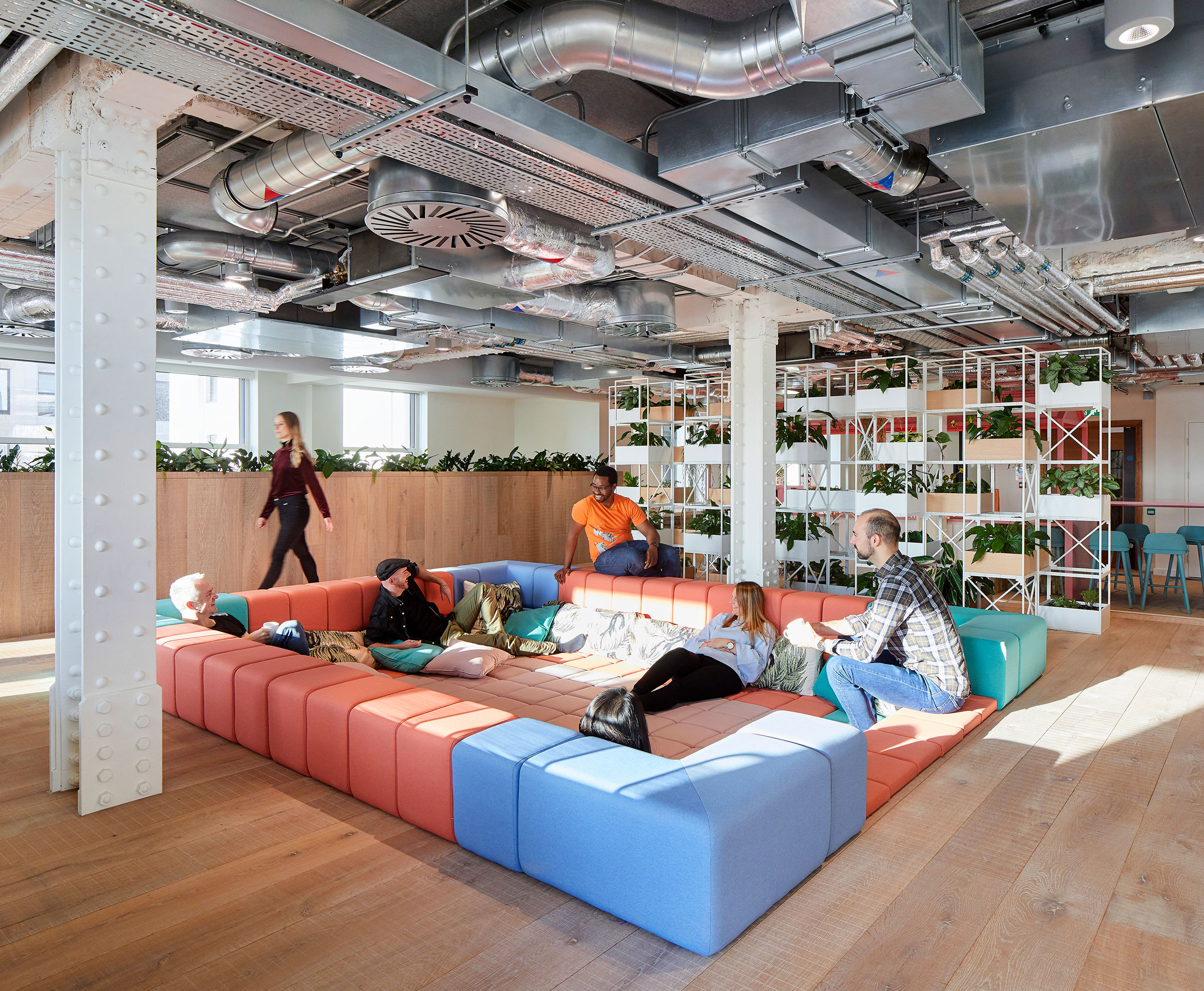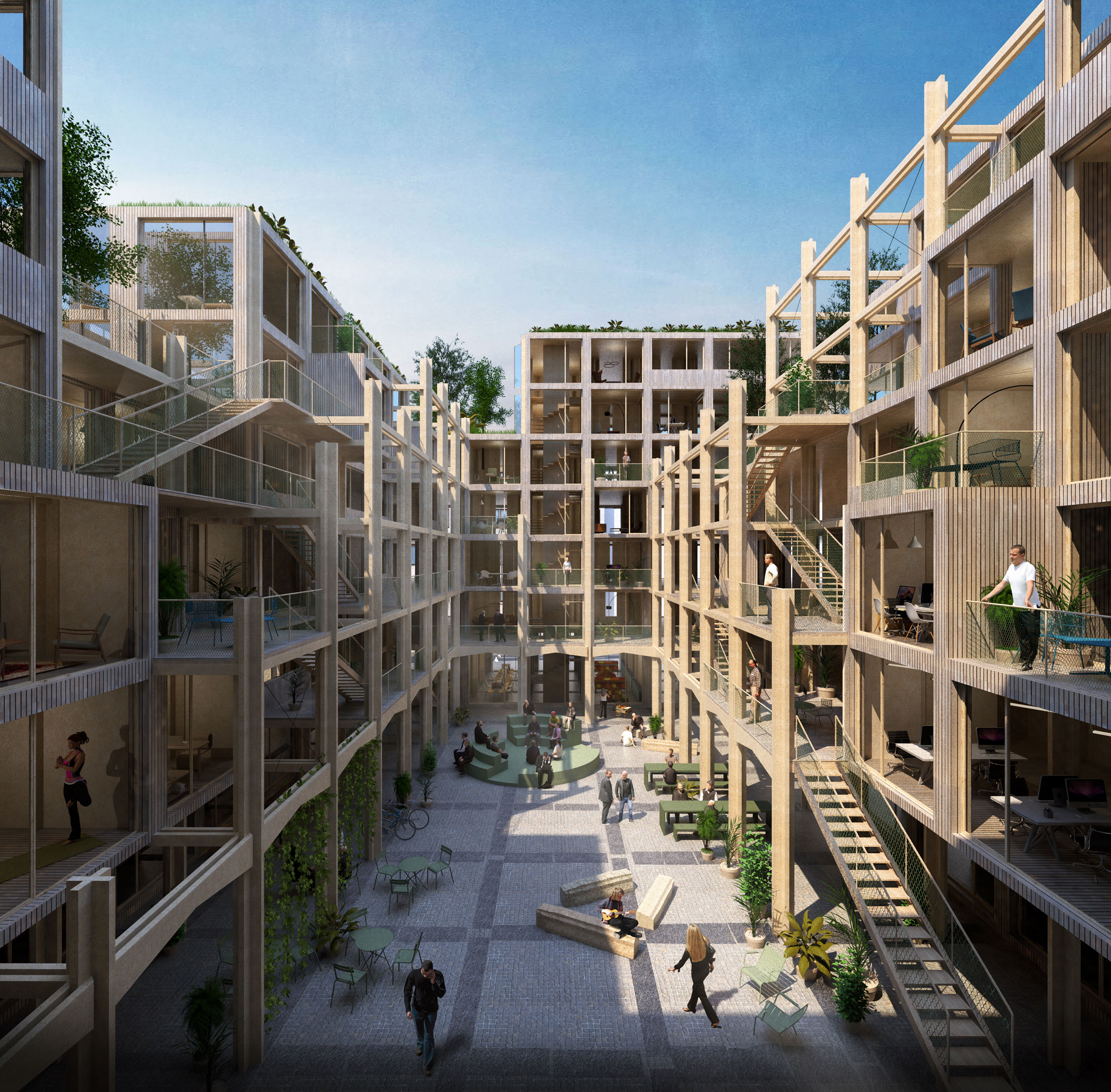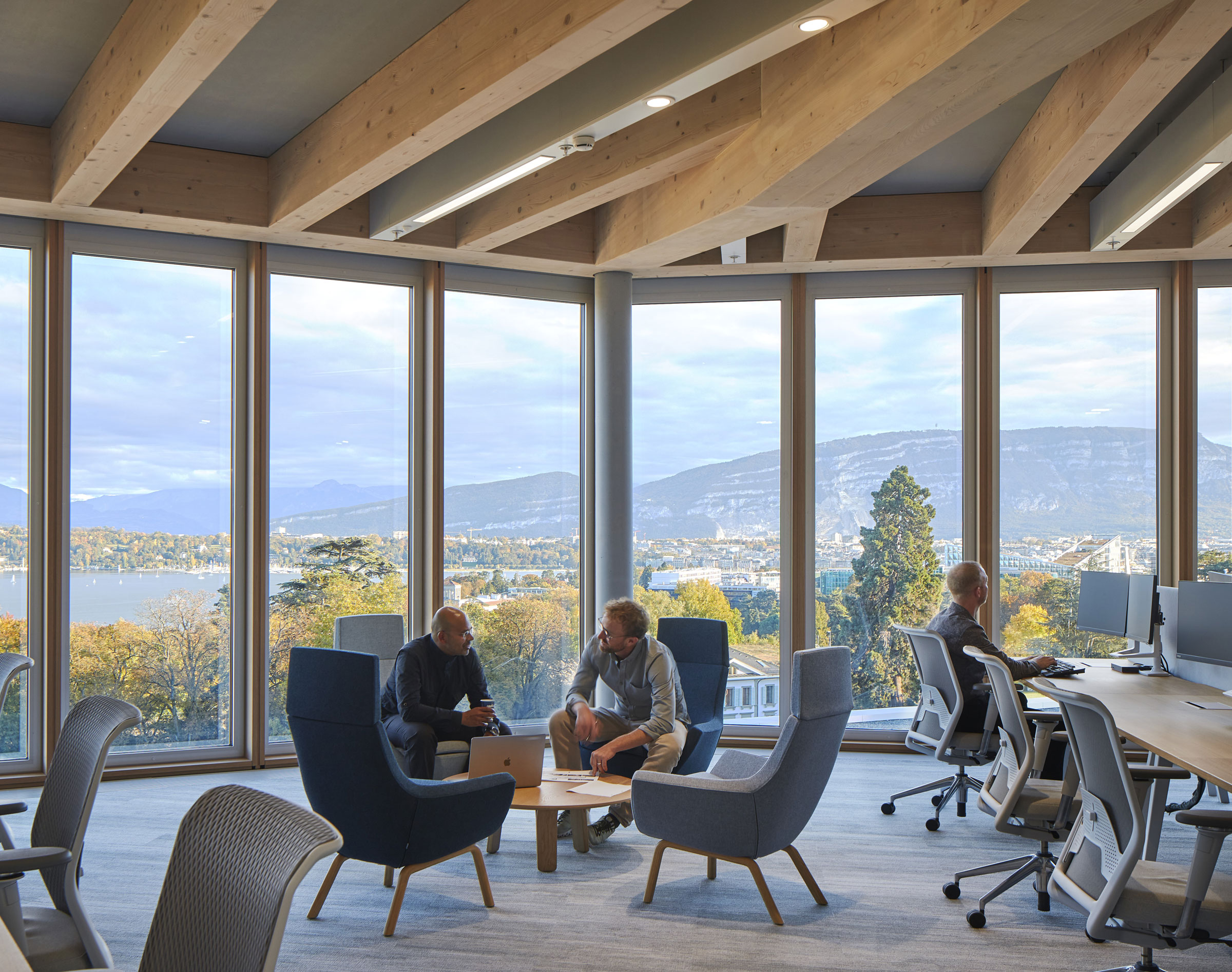Before the pandemic struck, Lucy Jefferson spent nearly £50 ($57) a day commuting from London, where she had moved in 2019, to Birmingham, England where she worked as a product manager at a large U.K. bank. Although it was Jefferson’s choice to relocate 125 miles away, she believed that the 5 a.m. starts and two-and-a-half journey weren’t necessary for her to do her job well. She says the workplace culture encouraged employees to always “look busy” in the office. ”Classic corporate culture.”
When a U.K.-wide COVID-19 lockdown in 2020 forced her employer’s staff to work remotely, Jefferson was able to save time and money working from home. But, frustrated by her employer’s reluctance to guarantee the flexible work model would continue, Jefferson handed in her notice in November 2020. Fast forward nearly two years, she works full time running her own e-commerce brand, Bare Kind, and all of her six employees work remotely. “I haven’t looked back, it’s been amazing,” she says, citing benefits to her mental health—and her bank balance.
Jefferson says her former colleagues tell her it’s now much more common to work from home and as a result, the Birmingham office has lost its former buzz, with some floors no longer in use. This shift in office culture is in no way unique—offices in major U.S. cities are less than half as busy as they used to be, according to data from security provider Kastle Systems. The pandemic forced many companies to shift online, and some employees realized they preferred it. In the U.S., Australia, France, Germany, Japan, and the U.K, 18% of workers aren’t going into the office at all, according to a survey published in July by Future Forum, while patterns of hybrid working have become the norm for nearly half of the workforce.
Meanwhile, business leaders have been twisting themselves in knots over the return of in-person work, which some argue promotes more productivity and collaboration. At times this has created tensions.
Read More: Dropbox Tossed Out the Workplace Rulebook. Here’s How That’s Working
The clash in priorities between employers and workers has come amid record resignations across the workforce around the world. In the U.S., around 4 million workers have been quitting their jobs every month since April 2021, with many citing workplace inflexibility as a key factor. But being in the office could make a difference to their careers. In response to a survey published last month by workplace platform Envoy, 96% of U.S. executives said they were more likely to notice the contribution of employees in the office.
The conundrum for businesses has been getting workers to come back. Some industry leaders are viewing the pandemic disruption and shifting labor market as an opportunity to reconfigure workspaces in a way that prioritizes flexibility, wellbeing, and sustainability—and actually entices employees to travel in. The office may never dominate the world of white-collar work in the way it did pre-pandemic, but innovative designers and bosses are hoping it will add greater value to both their businesses and employees’ lives.
Making workplaces “commute-worthy”
While the new ways of working during the pandemic came as a shock to many businesses, global music streaming platform, Spotify, was well ahead of the curve. Just a month before the U.K. first went into lockdown in March 2020, Spotify unveiled its new London headquarters that would house hundreds of freshly hired employees and one of the company’s largest R&D hubs. Gone were the sea of desks typical of traditional office spaces. Instead, large booths, plush lounge spaces, production studios, and dedicated “listening rooms” gave the space, a “social club” feel, says Sonya Simmonds, Spotify’s global head of workspace design. Although employees initially couldn’t benefit from the new space—situated inside the Grade II listed Art Deco Adelphi Building in the heart of London—during the early months of the pandemic, the building was primed to cater to the blend of remote and in-person work on their return.

“We all felt disappointed not to use the new office and share the new spaces [during lockdown], particularly the stage and listening rooms with artists,” says Simmonds. As workers returned to the offices, it was set up to better suit their needs. Spaces dedicated to wellness provided a welcome getaway for workers dealing with the stresses of the pandemic, Simmonds says. “When we were allowed to return we really appreciated the wellbeing rooms.”
The idea behind the space was “very much based on where we wanted to go in the future,” Simmonds says. In February 2021, Spotify announced a work from anywhere policy, a transition that she says was accelerated, not triggered, by the pandemic. Yet, the company found that staff were still choosing to travel to the London office—the huge variety of spaces within the building offered even greater flexibility than employees’ own homes. In a post-pandemic era, workplaces must be “commute-worthy” for remote workers, says Shane Kelly, principal director at London-based architecture firm TP Bennett, which designed Spotify’s London office. “It’s about creating buildings that offer really collaborative experiences, focused on community and amenity, that you don’t get when you’re engaging remotely,” he says. Following the success of the London HQ, Spotify rolled out the design concept across its global locations.
Read More: How to Ask Your Employer if You Can Work Remotely Permanently
Swiss furniture brand Vitra took the concept of work flexibility one step further, when in spring 2021 it filled its headquarters in Birsfelden, Switzerland with customizable fittings that allow for multiple office configurations. The company’s new range, dubbed “Club Office,” includes modular sofa systems, flexible partitions, and foldable desks that fit together like a puzzle, allowing teams to tailor the work set-up to a variety of needs, moods, and even locations. By letting employees use their own office as a “laboratory” for new design concepts, Club Office fostered flexibility within Vitra’s workforce, says the company’s chief executive, Nora Fehlbaum. “Environments shape our thoughts and feelings,” says Fehlbaum. “This environment signals to stay on your toes, be ready to move.”
Fehlbaum hopes that Vitra’s products will make all workers feel connected to their office environments, even as their companies downsize or shift to co-working spaces. “The Club is the physical environment where a common mission and sense of belonging comes to life,” she says.
Blending the office with the home
Months of isolation during lockdowns around the world made workers appreciate the feeling of belonging to a team and connecting with colleagues—even when working remotely or from their homes. According to recent findings from the WFH research project, a monthly survey run jointly by the University of Chicago, Instituto Tecnológico Autónomo de México, Massachusetts Institute of Technology and Stanford University, the average professional spends more than 40% of their working day interacting with others. With this in mind, Edouard Bettencourt and Malik Lemseffer, founders of French-Moroccan architecture firm Studio BELEM, have focused on designing a space where workers could connect and interact with others within the comfort of their own homes. Their aula modula apartment block design—a Tetris-like system of cube-shaped units with sliding wall panels—incorporates the collaborative elements of an office environment in a residential setting. While the block hasn’t been built yet, the firm says it is in talks with various developers.

With each block arranged around a sunny inner courtyard, the idea is that inhabitants would be encouraged to develop a sense of neighborly community, even while they work from home. “If you work remotely and just stay in your own flat or office all day, you’re going to go crazy not seeing anyone,” says Lemseffer. Creative shared spaces in the building, including shared terraces, co-working rooms, and roof tops, allow residents to network, brainstorm, and celebrate professional milestones—”all the things that can be a little bit harder to do remotely,” he says. At the same time, the architects were keen to contain the intimate living spaces and office units in different rings of the building, to allow residents to switch off from their work as they cross the physical boundary.
The blurring of the home and work environment precipitated by the pandemic forced many businesses to accommodate the unique personal circumstances of each employee. One such accommodation was caregiving responsibilities, as workers had to juggle educating their children while schools were shut or caring for elderly or sick relatives. Research published in June by the Society for Human Research Management found that, even as the pandemic subsides, workers place increasing value on jobs that offer the flexibility to care for family members.
Read More: The Dream of an ‘Internet Country’ That Would Let You Work From Anywhere
Entrepreneur Keltse Bilbao recognized this need before the pandemic when, after relocating to Los Angeles with her husband, she struggled to find a space where she could work on her own projects while being close to her daughter. In 2018, she founded Big and Tiny, a daycare service that provides on-site co-working spaces for parents—one of the first to do so in the U.S. “As a parent, what I wanted was the option to choose,” Bilbao says. “I could spend all day working, or I could have a break and be close to my child.” Big and Tiny has three studios in the U.S.—two in Santa Monica and one in Battery Park, New York City. They combine soundproof study rooms and phone booths, but also common spaces for working parents to socialize and relax.
While the business took a financial hit due to the pandemic—forcing it to shutter a center in Silver Lake, Los Angeles—the shift to remote working meant that more parents needed the service when lockdown restrictions were lifted. The increased demand for family-friendly work spaces led to partnerships with co-working office provider Second Home and mall and office complex Brookfield Place in New York City, with Big and Tiny providing on-site childcare. “These companies were having issues getting their customers back,” says Bilbao, adding that employers partnering with Big and Tiny to offer these workspaces to employees have been able to “differentiate themselves” from rivals whose offices didn’t cater to the demands of modern life.
Sustainability and wellbeing
Months of mask mandates, social distancing and enhanced hygiene practices shifted many people’s understanding of what makes a healthy environment. As poorly ventilated office buildings became potential public health hazards, citizens found respite in outdoor spaces. Simultaneously, the pandemic appears to have heightened public awareness of the climate crisis, according to a survey by Boston Consulting Group, as the effect of human behavior on the natural world, and the risks to humankind, have become more apparent. This shift inspired a new wave of office design that prioritized the wellbeing of both employees and the external environment.
Read More: In Some Workplaces, It’s Now OK Not to Be OK
Turkish architecture practice Salon Alper Derinboğaz made the learnings from the pandemic central to the design of Ecotone, an innovation center at Yıldız Technical University in Istanbul. When construction is completed in late 2023, the transitional space between teaching facilities and a professional academy will be “pandemic resistant,” says the architecture firm’s founder, Alper Derinboğaz, referring to the building’s partially open air design. Istanbul’s mild Mediterranean climate has allowed Derinboğaz to permeate a series of open co-working spaces with outdoor walkways, creating the kind of passive natural ventilation system that the World Health Organization says reduces the transmission risk of airborne viruses. Ecotone’s geothermal heating and cooling system is low emission, while the self-supporting structure—featuring columns resembling stalagmites and stalactites in caves—removes the need to lay intrusive foundations in the land. Fluid, glass-paneled walls and interior foliage allows for greater connection between workers inside the building and nature.

Developing innovative approaches to reducing the office building’s carbon footprint was a priority for Derinboğaz, who notes that the construction industry produces nearly 40% of global carbon emissions. “As architects we really need to find a new way of doing things,” he says. “That’s why we wanted the university’s innovation center to be innovative in its design.”
When it came to choosing architects for an addition to its Geneva campus, the United Nations (U.N.) says it chose London-based firm Skidmore Owings & Merrill (SOM) and Swiss studio Burckhardt+Partner. The architects took an innovative approach designing the 250,000 square foot office space. Completed in November 2021, the building was constructed on the historic Palais des Nations complex of buildings overlooking Lake Geneva, the U.N.’s second largest site after its New York headquarters. Water from the lake is used and recycled to heat and cool the building, eliminating the need for air conditioning units that are expensive to run and harmful to the environment.
According to Kent Jackson, SOM’s lead designer on the project, which the firm said was for a “non-profit humanitarian organization in Geneva,” the impressive surroundings gave the architects a unique opportunity to enhance the building’s design. “We wanted to give every employee [working in the office] a 360 degree view around the natural setting,” he says—floor-to-ceiling windows stand in place of walls. “Who couldn’t be inspired in their work looking at the hillsides, parkland, water, and mountains?”

For many of the companies pursuing new approaches to workspaces, that is the ultimate goal: creating a space to inspire and motivate employees to produce their most innovative work. In an age of increasing flexibility and less emphasis on geographical location, the office space must benefit its inhabitants as much as it does the business. “It’s about going through the whole journey of the build and design process together,” says Spotify’s Simmonds. “Coming out the other end, our staff feel they really have ownership over their office.”
More Must-Reads from TIME
- Donald Trump Is TIME's 2024 Person of the Year
- Why We Chose Trump as Person of the Year
- Is Intermittent Fasting Good or Bad for You?
- The 100 Must-Read Books of 2024
- The 20 Best Christmas TV Episodes
- Column: If Optimism Feels Ridiculous Now, Try Hope
- The Future of Climate Action Is Trade Policy
- Merle Bombardieri Is Helping People Make the Baby Decision
Contact us at letters@time.com